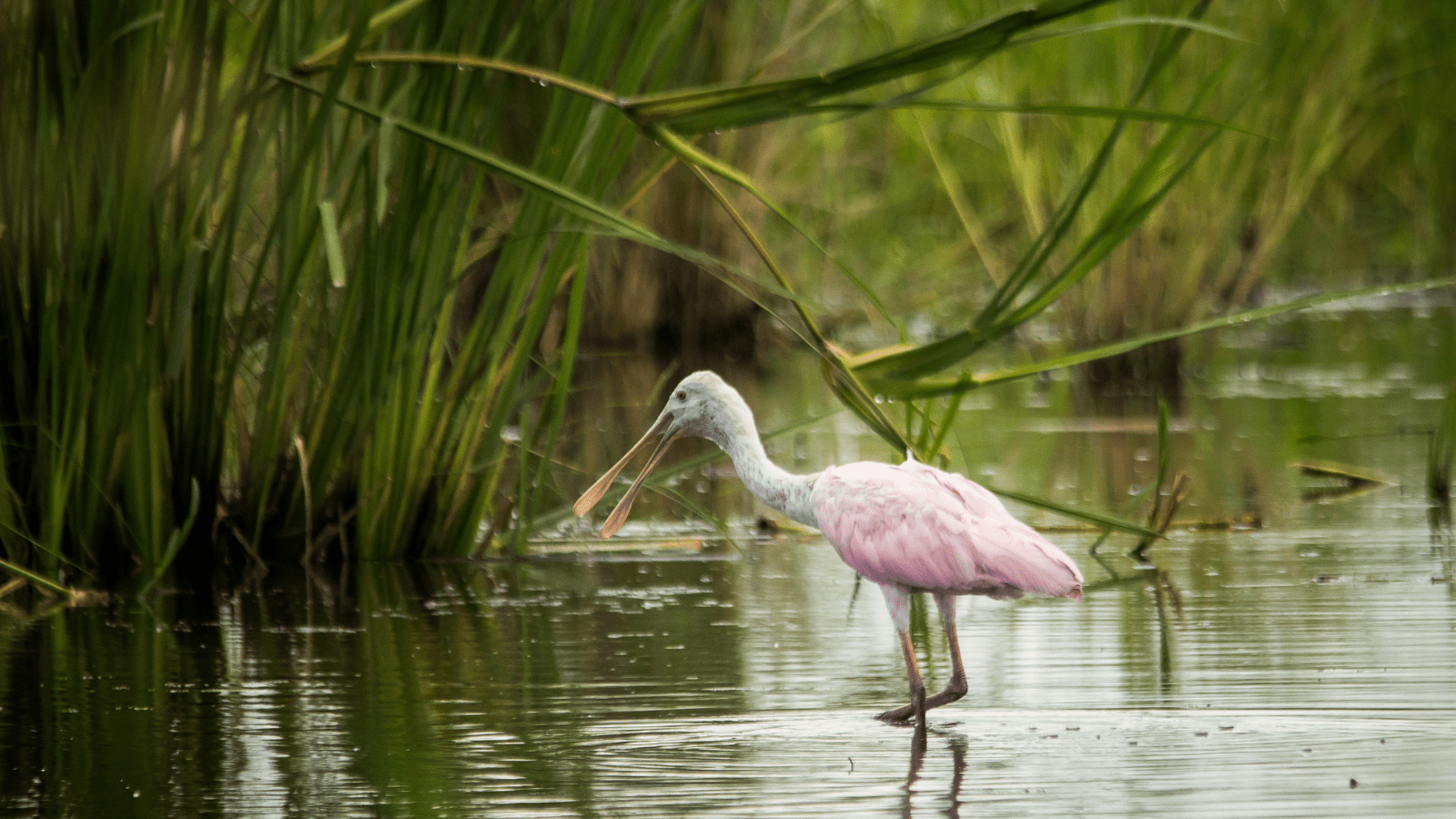We have much more to do and your continued support is needed now more than ever.
Let’s Move Some Dirt! Golden Triangle Marsh Creation

After many years of planning, the State of Louisiana broke ground on the $54.6-million Golden Triangle Marsh Creation project, a 600-acre project the National Wildlife Federation has long advocated for, that will restore an important storm buffer for the levees that protect New Orleans. Though area residents will be safer, as a result, wildlife will also be big beneficiaries.
Why Golden Triangle?
More people know the Golden Triangle for its role in history rather than for its name. These roughly 4,000 acres of wetlands adjacent to New Orleans contain the bayous the British traversed in 1814 just before the Battle of New Orleans. The area is also the site of the infamous “funnel,” where the Mississippi River Gulf Outlet and the Gulf Intracoastal Waterway converge, that created a catastrophic storm surge during Hurricane Katrina in 2005. That surge caused levees and floodwalls to collapse, unleashing a deadly wall of water into communities in the Lower 9th Ward, New Orleans East, and St. Bernard Parish. In the aftermath of this destruction, a 1.8-mile surge barrier was built—the largest design-build project in the Army Corps of Engineers’ history—to reduce future storm surge and better protect communities.
The Golden Triangle Marsh has long provided a wetland buffer for New Orleans, but it has been sliced and diced by little-used navigation channels, flood walls, and oil and gas canals. Along with destroying wetlands, this built infrastructure allowed salt water to permeate the marsh, creating a recipe for immense land loss. A restored marsh is an important investment in the funnel area, in particular, because it will help support a critical part of the levee system that surrounds New Orleans. Though the $1.3-billion surge barrier was an investment in protection, it is not designed to stand up against the Gulf of Mexico. It needs a healthy wetland buffer.
In addition to supporting storm-protection infrastructure, the Golden Triangle Marsh provides crucial wintering grounds for Mississippi flyway ducks at a time when marshes in the region are rapidly disappearing. It is also important to the most valued sportfish species in the Louisiana marshes: redfish, speckled trout, and largemouth bass abound in the area, and its proximity to New Orleans makes its restoration incredibly important for area sportsmen.
Restoration Needed
Restoration of this area is critical, not only to protect the Greater New Orleans area from floods and enhance community resilience but also to provide estuarine habitat for fish and wildlife in Lake Borgne and Mississippi Sound. A significant swath of the Golden Triangle is actually part of the Bayou Sauvage National Wildlife Refuge, the largest urban wildlife refuge in the nation, and forms the refuge’s southern boundary.
With the closure of the ill-conceived Mississippi River Gulf Outlet post-Katrina, the marsh has experienced a return to more normal estuarine function. This sets the stage for marsh restoration like the 600-acre project that is now under construction. Still, more restoration is needed to maintain the remaining wetlands in the Golden Triangle and the surrounding ecosystem, which continue to provide immense value to people, fish, and wildlife alike.





















